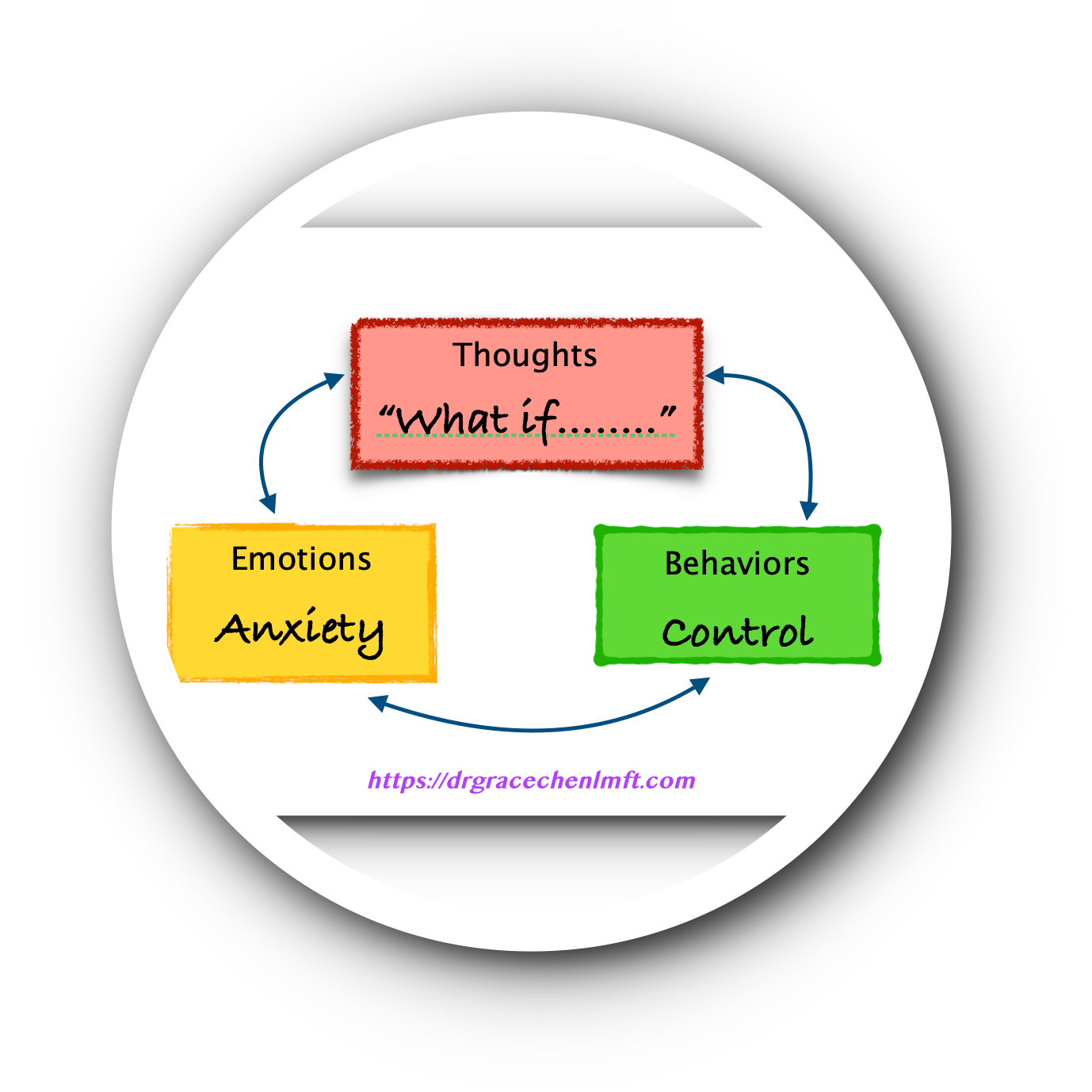The sense of “control” is often related to anxiety. I saw someone posted a picture on Instagram about anxiety. In this Instagram picture, a man is having an internal dialogue with his anxiety. It goes like this:
Anxiety: “What if this happens?”
Me: “But it won’t.”
Anxiety: “But what if it does?”
Me: “You got me there.”
I replied to this post with the following statement:
“ Me: If it happens, I will trust myself to have the ability to weather anything that comes into my way. I don’t have to worry about what’s because I can trust myself.”
I truly believe that the only way to combat anxiety is the unwavering trust in yourself. However, to explain where my conviction is coming from, I first have to explain what’s anxiety.
So, you might have read this description on social media about the difference between anxiety and depression.
Anxiety is in this current moment, worrying about the future “what if”s.
Depression is in the present moment regretting about the past “could’ve, should’ve, or would’ve.”
People who are anxious spending their present moment worrying about the future with “what ifs.” People who are depressed spending their present moments regretting the “could’ve, should’ve, and would’ve” happen if the past wasn’t the way it was.
So, what’s missing? “Now” or the “present moment” is missing. This is how I explained to my client why the meditation or mindfulness breathing works for our brain. Our ability to cut off the “what if” or “could’ve, should’ve and would’ve” is the same as stopping our brains from wandering around and coming back to the present moment of breathing.
In this article, I want to focus on the “what-ifs” control, and anxiety. I will leave depression at another time.
“Because I don’t know the what-ifs, it makes me anxious. Because I don’t like to feel anxious, I try to control my environment as much as possible.” This is generally the surface conversation I have with the clients who are anxious about controlling behaviors.
From a cognitive-behavioral therapy (CBT) perspective, it looks like this:
 The standard CBT treatment is to identify the situation (A), challenge the thoughts (B) to change the emotions, and to change the behaviors (C). You might recognize this as the standard A-B-C worksheet that you might have seen floating around or assigned by your therapist as a homework assignment. The Instagram photo also used the same idea to demonstrate the inner conflicts of anxiety.
The standard CBT treatment is to identify the situation (A), challenge the thoughts (B) to change the emotions, and to change the behaviors (C). You might recognize this as the standard A-B-C worksheet that you might have seen floating around or assigned by your therapist as a homework assignment. The Instagram photo also used the same idea to demonstrate the inner conflicts of anxiety.
Challenging the “what-if” belief can lead to the change of the emotions and the behaviors. The problem is this: it doesn’t stop the “what ifs” keep coming back. I believe that any part in us used to be a survival strategy, and was once a helper to us. Therefore, the “what-ifs” is a part that is trying to prevent me from facing a disaster. The “what-ifs” was a helper to me once. That’s why I rely on the “what-ifs” currently, and I can’t get rid of this voice in my head. To get rid of “what ifs” I first have to be friends with “what ifs”.
Essentially, there is an advantage to keep thinking about “what-ifs.”
Instead of challenging the “what ifs,” I often ask the client: “If you know the answer of the what-ifs, how would that help you?” Generally, this is the beginning of a beautiful relationship with the “what-ifs.”
(This article is getting really long. Continued Reading by Clicking Here for the Part-II.)

One Response